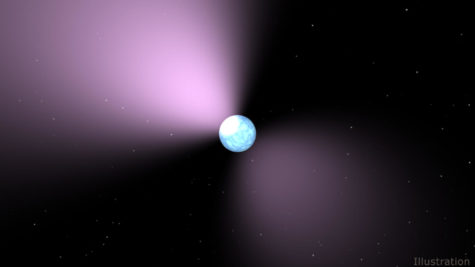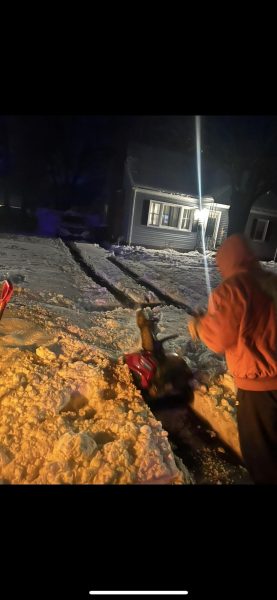Neutron Stars Collide

On August 12, 2017, scientists and astronomers detected the collision of two neutron stars. The collision approximately 130 million light years away, which means that it would take 130 million years to get there, traveling at the speed of light. NPR said, “This explosive impact created ripples in spacetime that traveled all the way to Earth, arriving at 8:41 a.m. ET on Aug. 17.” This means the collision actually happened 130 million years ago but we are only felt the effect in early August.
Neutron stars are billions of years old, and are the remains of stars that died in a supernova. Next, the core of star collapses in on itself, resulting in a very dense object, what we would then call a neutron star. NASA said that “Matter is so packed so tightly that a sugar-cube amount of material would weigh more than 1 billion tons” Neutron stars are about the size of a small city, which is very small compared to normal stars and other planets.
When talking about the collision, CNN quoted Tony Piro, the George Ellery Hale Distinguished Scholar in Theoretical Astrophysics at the Carnegie Observatories, as saying “This is more energy than has been released by the sun during its entire life, and this was released during just tens of seconds [20-30 seconds] as the neutron stars [spiraled] together.” As well as releasing energy, NPR has Daniel Kasen, theoretical astrophysicist at the University of California, Berkeley, as estimating this collision produced “around 200 Earth masses of pure gold, and maybe 500 Earth masses of platinum.” This discovery gave us a lot of new insight as to how heavy elements, such as gold, silver, lead etc. got into the Earth, as they cannot form naturally on Earth.
Furthermore, the revelation that gravitational waves and light travel at the same speed has excited the science community. NPR has David Shoemaker of MIT, a physicist who serves as the spokesman for the LIGO Scientific Collaboration Who said “This put us into a very high state of excitement.” and “The morning was transformed from ordinary bureaucracy to a morning of slightly breathless discovery as we tried to figure out how we could most quickly get the news out to observers to try and make the most of this event.”
With all of this new information, astronomers and scientists alike can develop new studies and experiments, and will use this once in a lifetime event to their advantage.





